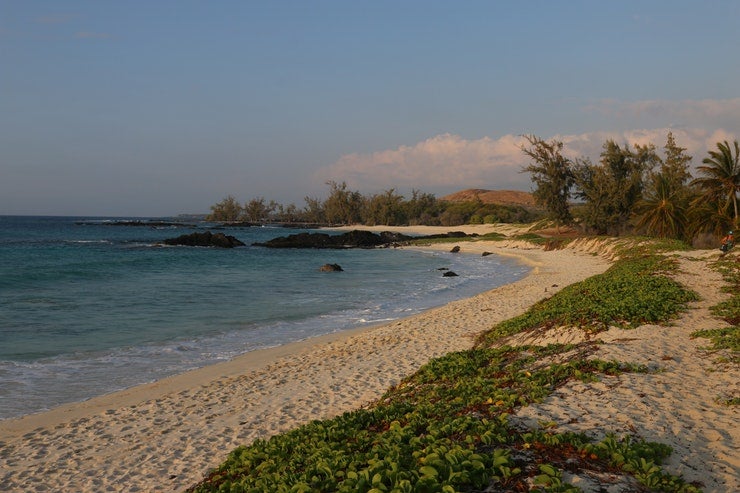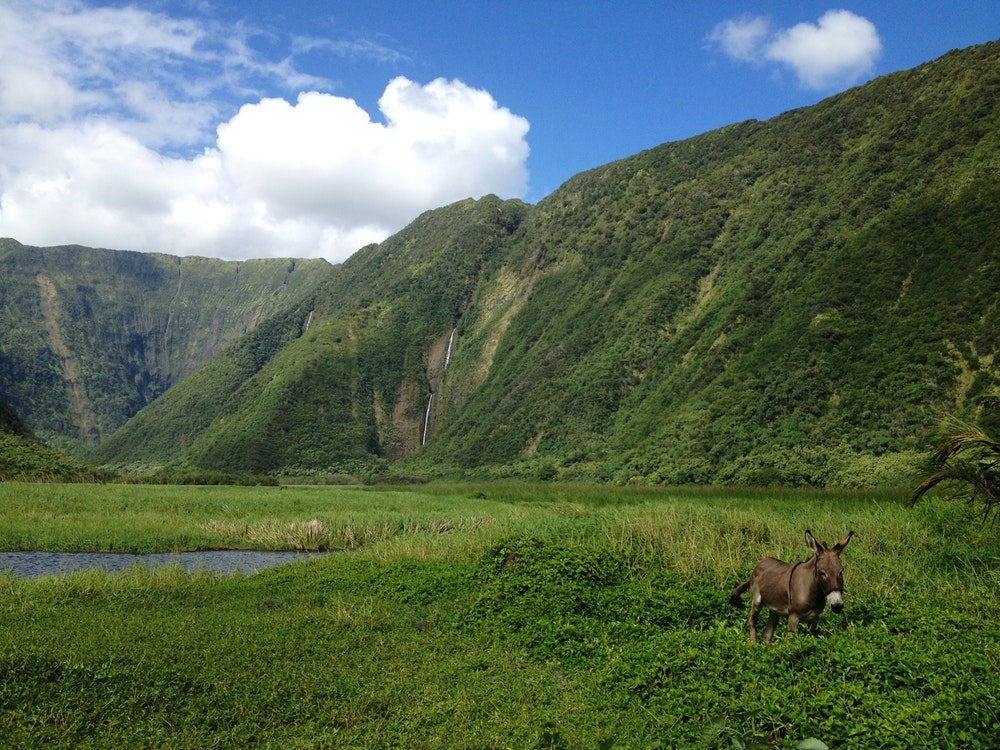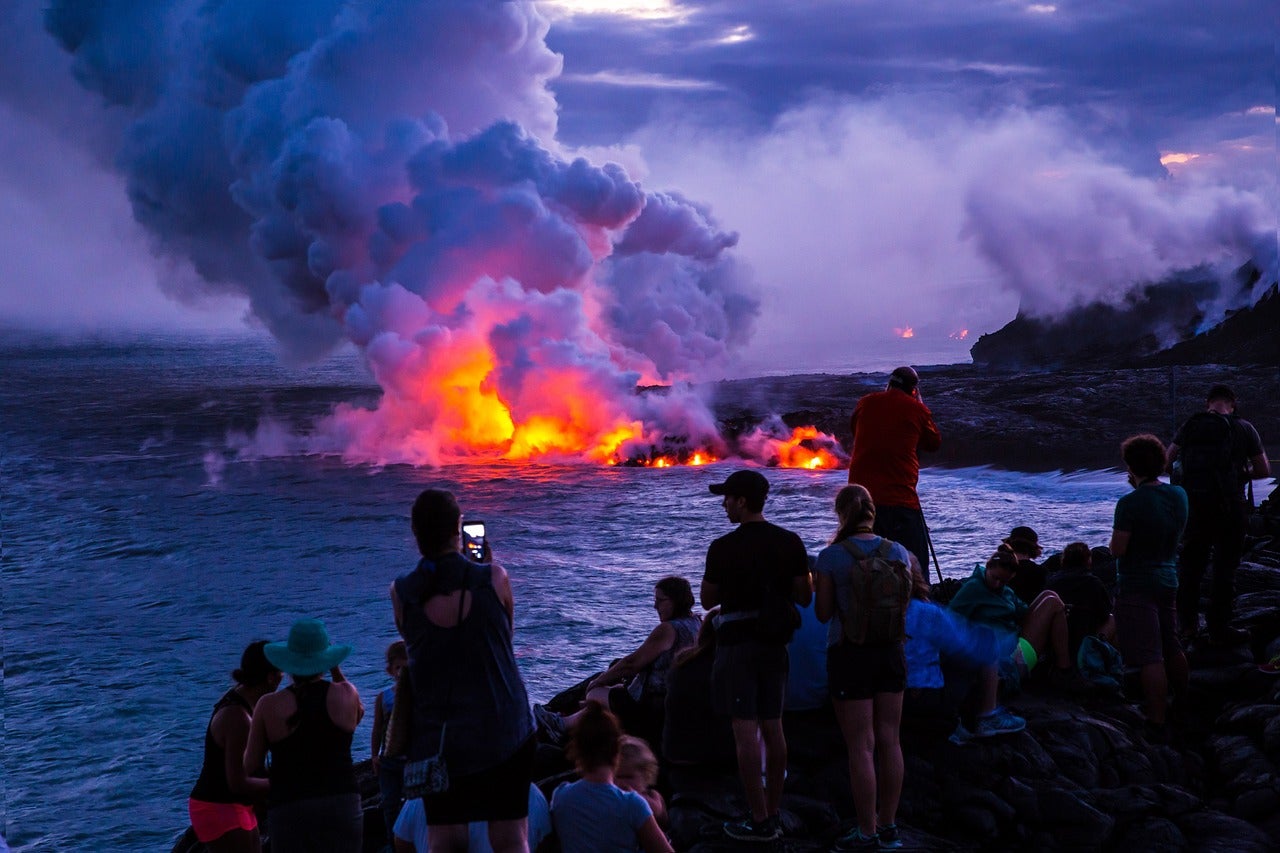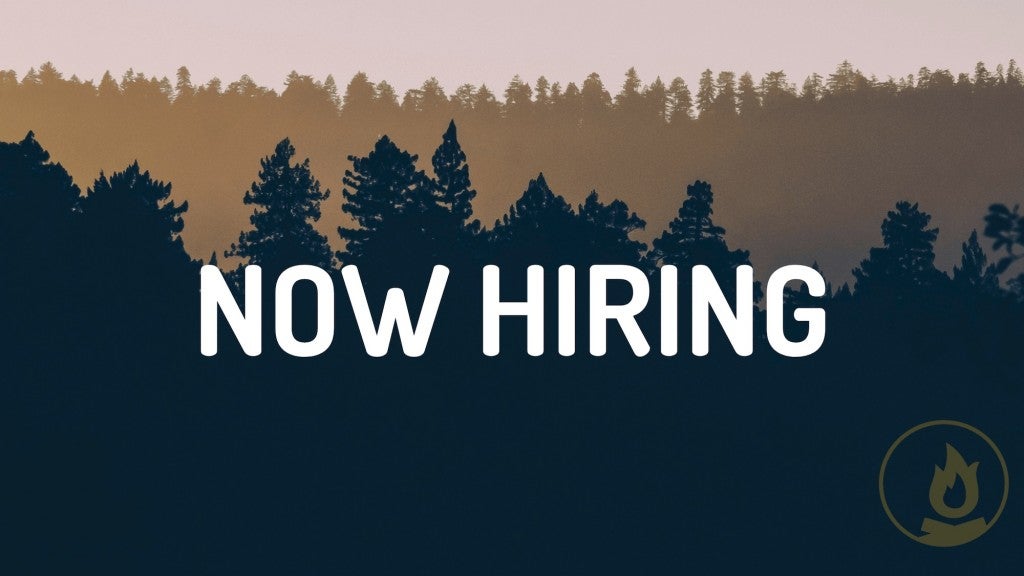All summer long, the Kilauea eruption in Hawaii Volcanoes National Park on the Big Island has continued as one of the most devastating events that Hawai’i has seen in decades.
Fissures opened up in roads and fields, lava began to run not just into the ocean (which has been going on for years on a much smaller scale), but into neighborhoods, too. The authorities warned that refrigerator-sized chunks of rock could be blown out of the crater along with noxious gases, plumes of glass-filled smoke, and plenty of ash. Farms and houses have been gobbled up by lava flows and people have watched their livelihoods and memories burn. It’s been a mixture of the awe-inspiring and tragic, as only one of the world’s most active volcanoes can provide. Thankfully, no deaths have been reported as a result of the Kilauea eruption.
Still, the eruption is ongoing and remains somewhat unpredictable, despite scientists best efforts. As of August 2018, observers found that lava output was starting to slow down out of Fissure 8, one of the most active parts of the current Kilauea eruption. That’s good news for now, but there’s no sign that Kilauea is done spewing molten rock and gasses just yet. On top of everything else, Hurricane Hugo is currently headed for Hawaii. While it’s unlikely to result in a super-disaster the likes of which you might see late at night on the SciFy channel, it could increase the risk of lightening and massive volcanic mudslides called lahars. It’s still as important as ever to give Kilauea and the eruption zone a wide berth.
If you were considering a trip to Hawaii, you might be wondering if it’s still safe to go and what the situation is really like on the ground. The answer depends on where you were planning to explore and pitch your tent.
For several years now, a bit of a cottage industry in Hawaii Volcanoes National Park has cropped up to provide visitors with volcano tours by helicopter and boat, as well as rental bicycles, water, headlamps and other gear that can help them reach viewing spots to see the lava flow into the sea. It’s safe to say that this isn’t the safest activity right now, and you’ll need to adjust your expectations and itinerary until the Kilauea eruption simmers down.
It’s true that as long as the Kilauea eruption is ongoing, conditions are constantly changing. Chain of Craters-Kalapana Road, the access road many tourists use to reach lava viewing locations is now being converted by the National Park Service and the Hawai’i Department of Transportation to a fully-functional alternate highway in case the lava spills over onto Highway 130. As evacuations continue, it’s more important than ever for visitors to stay out of the way so that safety and rescue efforts aren’t hampered and rescue services aren’t diverted away from residents who suddenly find themselves in harms way. That means no sneakily trying to find a place to roast lava marshmallows.
That said, you needn’t worry that all of Hawai’i is engulfed in flames. The Big Island earned its name for a reason, and it’s worth remembering that the area around Kilauea is just a small fraction of Hawai’i. The southeast corner of the island may be volatile, but it’s still safe to visit some of the island’s best attractions—including the glittering Papakolea Green Sands Beach, the sea turtles at Punalu’u Black Sand Beach, and Rainbow Falls and Akaka Falls in Hilo. The United States Geological Survey even tweeted a graphic to put the Kilauea eruption into perspective, and to give visitors some peace of mind.
This nice comparison image is being shared right now. Kudos to anyone who can tell us the original source! pic.twitter.com/O65Yaycfki
— USGS Volcanoes🌋 (@USGSVolcanoes) May 24, 2018
The majority of the Big Island is still visitable and gorgeous, and there are plenty of camping and hiking opportunities to take advantage of with little to no risk of getting tangled up in the eruption. Kona is 100 miles away from the Kilauea eruption area, and has reported no changes in air quality. Even Hilo, which is only 40 miles from Kilauea isn’t yet having any air quality issues. The same is even more true of Waipio, which is on the far northern end of Hawai’i, opposite of Hawaii Volcanoes NP. There are plenty of safe, beautiful places to camp worry-free, so there’s no need to cancel that flight, or start planning your tropical vacation elsewhere.
Hawai’i Campgrounds that Are Still Safe To Visit
Heading to Hawai’i to camp this summer? These campgrounds are still perfectly safe and accessible:
1. Onekahakaha Beach Park
Of all the campgrounds on this list, this is the closest to Hawaii Volcanoes National Park, and therefore closest to the Kilauea eruption. However, it’s closer to the city of Hilo than it is to Kilauea, and has so far been safe from the lava, fissures, and polluted air. The Dyrt’s Ranger Christie L. visited quite recently, close to a month after the eruption began, and had a great experience.
“We were happily surprised after reading mixed reviews online. It was quiet, quaint, and cozy,” writes Christie. “A lot of families and a few newlyweds. Everything was easy to find and hook up. We had a slight view of the ocean from the mountains… Remember to pack some warm pj’s! All in all it met all our needs and we would return depending on the devastation thats going to be left behind from Pele.”
Hilo, and the whole eastern side of the Big Island, do tend to be a little sleepier than the much more touristy, lively city of Kona on the western coast. That said, this side of Hawai’i is still well-worth exploring, with a nice zoo for the kids, numerous waterfalls, and the pretty seaside vibes of Hilo itself. By all means enjoy some good camp food at Onekahakaha Beach Park, but if you want a real treat, plan to have dinner in Hilo one night at Moon & Turtle. It’ll be one of the best meals of your life.
Camp Here2. Spencer Beach Park

Image from The Dyrt camper Tarah W.
Beloved by locals and visitors alike, Spencer Beach can sometimes get a little crowded. But once you see it for yourself, you’ll understand why. How many other places can you camp by the ocean, swim with sea turtles, and enjoy nice amenities like grills, showers, bathrooms, and picnic tables? The Dyrt’s Ranger Leah H. writes, that this is the “best place I have ever camped but maybe I was just super excited to be there. The whole place was beautiful! Would go again in a heart beat!”
Spencer Beach is also just down the road from the Pu’ukohola Heiau National Historic Site, where you can see the the largest restored temple in Hawaii. This heiau was originally built in the 1700s by King Kamehameha the Great, who united the Hawaiian Islands 20 years after its construction. In addition to the historical significance, this is also a nice spot to do some whale watching. Humpback whales are known to come to the Kohala Coast during the winter and spring months, just when you’re probably dreaming of a nice warm tropical vacation.
Camp Here3. Punalu’u Beach Park

Photo by The Dyrt Ranger Dave G.
Punalu’u is a popular destination on the western side of Hawai’i for good reason— it has spectacular black sand beaches that are home to large, ponderous sea turtles. Just back from the beach is a pond thick with water lilies straight out of a Monet painting surrounded by palms, flowering bushes, and huge, ancient trees. It’s truly a one-of-a-kind landscape, and a treat to camp near. The Dyrt’s Ranger Dave G. calls this spot a “wonderful introduction to Hawaiian camping.” The campsites aren’t actually in the sand, but set back from the beach. Christy K. notes, “you are on a grassy area next to the beach so you can sleep to the sound of the crashing waves without the hassle of sand.” After all, that beautiful black sand is far lovelier to look at than to experience in your sleeping bag.
If you love to chase sunsets, park your camp chair here and watch the tropical colors melt into the warm, dark curve of the beach. And if you need a little break from the sun, chill out at the nearby Shaka Restaurant in Naalehu. It’s the southernmost bar in the United States, so enjoy a cold beer with the knowledge you’ve never had suds this close to the equator before. Also close is the Punalu’u Bake Shop, which features fresh, fragrant Hawaiian sweetbreads, sandwiches, and souvenirs. Like Shaka, the folks at Punalu’u Bake Shop are quite proud of being the southernmost bakery in the U.S. You can try some truly authentic local dishes here, too, including Ka’u Coffee, Malasadas, and Anpans.
Camp Here4. Waimanu Campsite Pu’u O Umi Natural Area Reserve

Photo by The Dyrt Ranger Laura H.
The Pu’u O Umi reserve is a splendid 10,000 acres spread over the Kohala Mountains at the north end of Hawai’i. It also tends to be a little less crowded than other parts of the Waipio Valley and you can enjoy black sand beaches without quite the crush you sometimes see at Punaluu. That also means you’re going to put a little more effort into reaching the Waimanu Campsite, but it’s well worth the hike. The Dyrt’s Ranger Tarah W. sung Waimanu’s praises, writing, “No words. A beautiful pristine beach, waterfalls all around, and towering green mountains covered in dense jungle.”
Another Ranger on The Dyrt, Laura H., notes that “It’s a moderately strenuous hike with a pack on your back! Be prepared with water filter, rain gear, mosquito repellant and everything else you need for backpacking. Otherwise this is the most fantastic paradisiacal campsite on a beach you’ll find in Hawaii! Less people than the popular Kalalau on Kauai. Research this one a ton and get permits far in advance!”
Camp Here5. Kohanaiki Beach Park
If surf camping is your thing, you’ll love Kohanaiki Beach. It doesn’t boast the novel black sands of Punaluu or Waimanu, but its white sands do give you access to some nice waves. It’s also a little off the beaten path if you don’t feel like facing the competition at some of Hawai’i’s more popular camping spots. Ranger Rachael H. says that Kohanaiki is “known to the locals as Pine Tree surfing beach, there is some surfing. Not a great swimming beach, but plenty of shoreline and tidepools at one end to explore.” If you want to rinse off the salt and sand before you get cozy in your bivvy sack, she also notes that there are “nice bathrooms with showers available.” Aloha, indeed.
Camp HereHow You Can Help
As you can see, the Big Island still has lots of incredible beach camping, unique views, and exciting outdoor adventures to be had, as long as you avoid a small section of the southeast corner near the Kilauea eruption. So go ahead and book that flight—the people of Hawaii will be grateful if the high summer tourist season they depend on isn’t disrupted. Not only that, many businesses are donating a portion of their proceeds to volcano relief, so by visiting you’ll actually be giving some badly needed kōkua, aka assistance and good will, to those displaced by the eruption.
That said, you’ll want to follow all rules and regulations extra carefully, and come up with plans A, B, and C just in case. There might be a little extra competition for campsites closer to Kilauea, and you’ll definitely want to have your permits in order no matter where you go. Some news reports suggest that Hawaiian residents displaced by the Kilauea eruption have turned to camping themselves until their housing dilemma is sorted out, only to be ticketed for not have reserved their site.
If you want to help more directly, or from the mainland, you can also make a donation to the Hawai’i Community Foundation. There are also numerous other relief organizations accepting donations to help the communities affected by the Kilauea eruption. Whether you contribute directly or by spending your vacation dollars on the Big Island, every little bit helps, and will get you a big hearty mahalo, or thank you, no matter where you are.
This post was updated 8/6/18, so be sure to check with local authorities before making a trip! You can keep up to date on condition changes and the Kilauea eruption’s progress via the USGS Twitter account, as well as the USGS’s ongoing-FAQ updated on Facebook.



